Panasonic Lumix DMC-FX500
-
-
Written by Gordon Laing
Panasonic Lumix DMC-FX500
Panasonic Lumix DMC-FX500 noise reduction settingsThe Panasonic Lumix FX500 allows you to adjust its noise reduction by two steps in either direction. We photographed the same scene as above using the FX500 set to its lowest and highest noise reduction settings along with the default zero position. You really need to pixel peep to spot many differences between the samples below up to 800 ISO. As you’d expect, the low NR setting has fractionally greater detail at the cost of visible noise, while the high NR setting shows a smoother result, but with more smearing. But these are really very subtle differences in practice. So sadly the possibility to reduce the noise reduction hasn’t really helped improve image quality on the FX500, and its inability to record RAW files closes another potential door for those wanting to get the best from the camera. Now for some more real-life examples across its sensitivity range, including several taken in low light, check out our FX500 sample images gallery. |
Panasonic Lumix DMC-FX500 Noise Reduction -2 |
Panasonic Lumix DMC-FX500 Noise Reduction 0 (default) |
Panasonic Lumix DMC-FX500 Noise Reduction +2 | ||
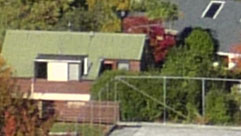 |
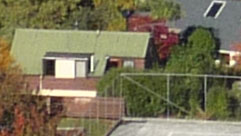 |
 | ||
100 ISO |
100 ISO |
100 ISO | ||
 |
 |
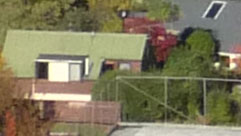 | ||
200 ISO |
200 ISO |
200 ISO | ||
 |
 |
 | ||
400 ISO |
400 ISO |
400 ISO | ||
 |
 |
 | ||
800 ISO |
800 ISO |
800 ISO | ||
 |
 |
 | ||
1600 ISO |
1600 ISO |
1600 ISO |
Panasonic Lumix DMC-FX500 results
versus Fujifilm FinePix F30
real-life noise
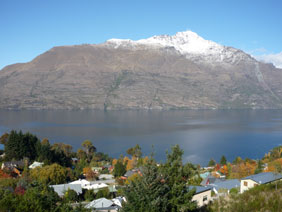 | To compare noise levels under real-life conditions we shot this scene with the Panasonic Lumix DMC-FX500 and the Fujifilm FinePix F30 within a few moments of each other using each of their ISO settings in Auto modes. The lenses on each camera were adjusted to deliver the same field of view. The image left was taken with the Pansasonic Lumix DMC-FX500 at 7mm f4.5 and with a sensitivity of 100 ISO; the original JPEG measured 4.47 MB. The crops are taken from an area just below and to the left of the centre and presented here at 100%. |
We’ve compared the Lumix FX500 against the Fujifilm FinePix F30 below – the F30 is an older model, but remains a benchmark in compact performance, so it’s interesting to see how newer models measure-up. Note, with more than 50% more Megapixels than the F30, the FX500’s crops show a smaller area.
Sharing the same sensor and image processor as the Lumix FX35, the results below for the FX500 are essentially the same. Both cameras unsurprisingly delivers the best results at their lowest 100 ISO sensitivities, although if you examine shadow areas or portions with flat colour at 100%, you can already see noise and processing artefacts even at this setting. With the sensitivity doubled to 200 ISO, there’s a softening across the images from both cameras with the finest details becoming smeared and processing artefacts more obvious.
At 400 ISO there’s a significant drop in quality and another big fall at 800 ISO. Fine detail is smeared-out, noise becomes obtrusive and the result ain’t pretty for anyone who likes to examine images at 100%. 1600 ISO is for emergency use only, and the less said about the High Sensitivity modes, operating up to 6400 ISO at 3 Megapixels, the better.
This is of course nothing we haven’t seen before, and the Fujifilm F30 is no angel either, but like our first real-life results page, it arguably captures similar degrees of real-life detail despite having 6 Megapixels to the FX500’s ten. As for the FX500 and FX35, like so many compacts these days, try and use them almost exclusively at 100 ISO, and 200 at a push.
The FX500 does however have one trick up its sleeve that’s missing from the FX35: adjustable noise reduction, and you can see the effect by scrolling to the bottom of this page. Alternatively, if you’re ready for some more real-life examples across its sensitivity range, including several in low light conditions, check out our Panasonic FX500 sample images page.
Panasonic Lumix DMC-FX500 |
Fujifilm FinePix F30 | |
 |
 | |
100 ISO |
100 ISO | |
 |
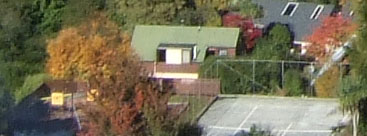 | |
200 ISO |
200 ISO | |
 |
 | |
400 ISO |
400 ISO | |
 |
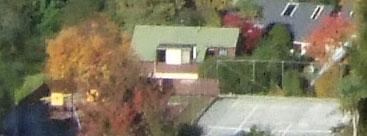 | |
800 ISO |
800 ISO | |
 |
 | |
1600 ISO |
1600 ISO | |
 | ||
3200 ISO not available under these conditions |
3200 ISO |




